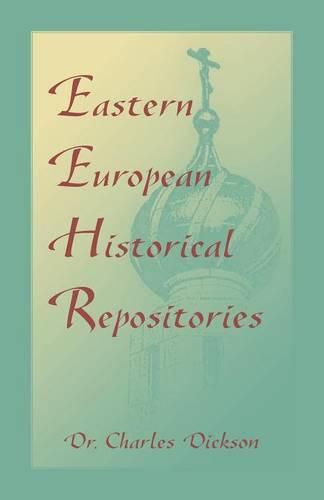Readings Newsletter
Become a Readings Member to make your shopping experience even easier.
Sign in or sign up for free!
You’re not far away from qualifying for FREE standard shipping within Australia
You’ve qualified for FREE standard shipping within Australia
The cart is loading…






America has often been described as a melting pot nation. While such an adjective contains some truth it does not capture the total flavor of its multiethnic experience. While many national groups have blended into the American fabric, they have also, to varying degrees, maintained a sense of individual ethic identity. This work represents an attempt to organize a list of the many resources that are available to serious students of Eastern European history in their ongoing search for family histories. The listings in this book cover the following ethnic groups: Albanians, Armenians, Bulgarians, Croatians, Czechs, Estonians, Greeks, Hungarians, Latvians, Lithuanians, Poles, Romanians, Russians, Serbians, Slovaks, Slovenians, and Ukrainians. Under each ethnic group a common format has been followed which includes an introduction to immigration patterns, followed by separate page listings describing the holdings of primary genealogical societies, museums, and educational institutions associated with that group. Next there are listings of other ethnic related societies which have some family histories followed by a listing of the regional public libraries located in areas where each particular group has settled in significant numbers. As the reader uses this handbook as a research tool in discovering group and family histories, hopefully he or she will be reminded that the American multiethnic experience may be singularly unique in human history.
$9.00 standard shipping within Australia
FREE standard shipping within Australia for orders over $100.00
Express & International shipping calculated at checkout
America has often been described as a melting pot nation. While such an adjective contains some truth it does not capture the total flavor of its multiethnic experience. While many national groups have blended into the American fabric, they have also, to varying degrees, maintained a sense of individual ethic identity. This work represents an attempt to organize a list of the many resources that are available to serious students of Eastern European history in their ongoing search for family histories. The listings in this book cover the following ethnic groups: Albanians, Armenians, Bulgarians, Croatians, Czechs, Estonians, Greeks, Hungarians, Latvians, Lithuanians, Poles, Romanians, Russians, Serbians, Slovaks, Slovenians, and Ukrainians. Under each ethnic group a common format has been followed which includes an introduction to immigration patterns, followed by separate page listings describing the holdings of primary genealogical societies, museums, and educational institutions associated with that group. Next there are listings of other ethnic related societies which have some family histories followed by a listing of the regional public libraries located in areas where each particular group has settled in significant numbers. As the reader uses this handbook as a research tool in discovering group and family histories, hopefully he or she will be reminded that the American multiethnic experience may be singularly unique in human history.